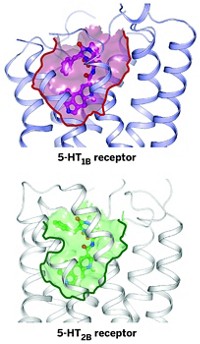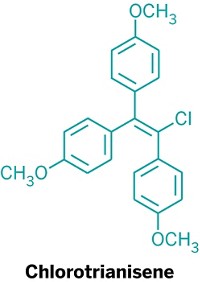Advertisement
Grab your lab coat. Let's get started
Welcome!
Welcome!
Create an account below to get 6 C&EN articles per month, receive newsletters and more - all free.
It seems this is your first time logging in online. Please enter the following information to continue.
As an ACS member you automatically get access to this site. All we need is few more details to create your reading experience.
Not you? Sign in with a different account.
Not you? Sign in with a different account.
ERROR 1
ERROR 1
ERROR 2
ERROR 2
ERROR 2
ERROR 2
ERROR 2
Password and Confirm password must match.
If you have an ACS member number, please enter it here so we can link this account to your membership. (optional)
ERROR 2
ACS values your privacy. By submitting your information, you are gaining access to C&EN and subscribing to our weekly newsletter. We use the information you provide to make your reading experience better, and we will never sell your data to third party members.
Biological Chemistry
Anti-HIV Strategy
Computers and experiment elucidate binding of potential antiviral molecules
by Elizabeth K. Wilson
April 3, 2006
| A version of this story appeared in
Volume 84, Issue 14

An amalgam of computer modeling and experiment has yielded insights on the inner workings of a protein vulnerable to HIV and the molecules that can block the virus.
The protein, known as CCR5, belongs to the family of G-protein-coupled receptors (GPCRs). HIV binds to CCR5 to gain access to immune cells.
At last week's ACS national meeting in Atlanta, Debananda Das, a computational chemist at the National Institutes of Health, reported that molecules that inhibit CCR5 predominately bind in a large lipophilic pocket on the upper transmembrane portion of the protein (J. Biol. Chem., published online Feb. 13, dx.doi.org/10.1074/jbc.M512688200).
Das, in a group headed by NIH retrovirologist Hiroaki Mitsuya, studied the binding of three CCR5 inhibitors, including the promising drug aplaviroc, with dozens of CCR5 mutants. They used that data to develop a computer model of the structure of the CCR5 binding site/inhibitor complex and the key binding interactions.
Because no crystal structure exists for CCR5, the group used the well-characterized GPCR pigment rhodopsin as their computational starting point. They also took into account the flexibility of the CCR5 side chains.
"This is a beautiful piece of work," said Douglas Richman, director of the Center for AIDS Research at the University of California, San Diego.
The research adds weight to growing evidence that drug design based on both computation and experiment may help streamline the drug discovery process, observed Stephen C. Peiper, chair of the pathology department at the Medical College of Georgia, in Augusta.
Other researchers also exploring CCR5 binding with different mutations are creating a valuable body of information, noted Martin Teintze, chemistry professor at Montana State University, Bozeman. "What makes this work interesting is that aplaviroc is actually a promising lead compound for an HIV entry inhibitor," he said.




Join the conversation
Contact the reporter
Submit a Letter to the Editor for publication
Engage with us on Twitter